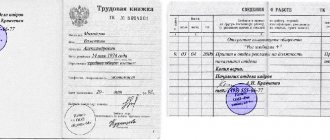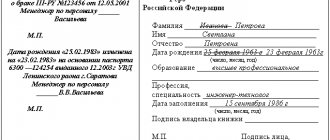You can lead a horse to water, but you cannot force it to drink. Dorothy Parker
Every day the situation on the labor market changes, the competition is getting stronger, and they are ready to look for professionals in their field, recruit and entice them by any means. For a company to be reliable and prosperous, it needs adherents. Both from clients and from employees. They are the ones who keep it afloat during storms and economic crises. But here's the question. We can bring a specialist to the company, but how can we make him fall in love with the company?
The famous writer is not optimistic, but she simply did not take into account the power of motivation in her remark.
Motivation with Maslow
Maslow's pyramid will outlive the Cheops pyramid. Igor Mann
Before we bring in the accounting on lavish employee salaries, let's take a look at whether money really is king.
So, bad news for those reading this article about not paying employees. It doesn't work that way. Until a person’s basic needs are “closed,” he will be of little interest to the rest. After all, you are unlikely to want to enjoy the beauty of the savannah if a lion is chasing you. Money satisfies the first two steps, but what next?
Now there is bad news for those who buy the love of employees with high salaries. Love lives... 3 months. Studies have found that after 3-4 months an employee forgets about his luck. He will fulfill all your requirements, work and submit reports. But without love. And this is fraught with lack of initiative and quick separation. How to get to the top of the pyramid and get a reliable employee?
How to motivate remote employees in 7 countries
I work as a recruiter, our company has 20 people, we are in 7 countries, with a maximum difference in time zones of 11 hours. We work with international customers, federal corporations and are constantly introducing our own methodologies, the atmosphere in the team is stable, there is enough work, and at the moment we are normal in terms of performance indicators.
Every day, from morning to night, we conduct hundreds of interviews, communicate with candidates and clients. Just as a theater begins with a coat rack, so hiring begins with a recruiter. The recruiter is the face of the customer, so it is important to maintain a resourceful or balanced state no matter what. It is extremely important to keep the team's spirits positive, with a smile on the street and at a good speed.
I recently attended an event, and talking with the owners, I got the impression that I was from another world. The owners asked questions that were strange to me, for example, “How to get employees to work,” remember the movie Elektronik: “Uri, where is his button?!” ... I realized that many people have problems with responsibility. We, on the contrary, have problems with hyper-responsibility; we prohibit people from working on weekends, kick everyone out of chats, reassure employees if they have made a mistake, and encourage them. If someone from the team has completed their tasks, then they can ask the one who is overloaded.
While talking about my team, I noticed that they looked at me like I was crazy. They ask, sometimes making caustic comments that we pay above the market, that we have part-time workers. NO. Our entire team works without salary, the peculiarity of our business is that we receive money ONLY for results. For the process, we will never get it, even though it will be three times perfect.
I was surprised by the question “How to make your employees learn.” In our team, all departments conduct internal training, constantly uploading articles, podcasts, webinars, and videos to the general chat. This is already a culture of constant learning.
I also heard the problem that employees do not communicate with each other, as it is fashionable to say: “cross-functional communications are poorly developed.” Departments exchange internal developments with each other if the lesson is useful for another department.
After this event, I began to analyze how I managed to avoid frequent problems in the team. In the end, I found our secret. I’m sure it’s not individual, it’s systemic. It can be implemented in many businesses. At the same time, the plus and minus in the current situation is that we initially worked remotely; I have never seen many of the employees in person. I can’t call you for coffee when I see tear-stained eyes, I can’t hug a person when he’s feeling bad, or let him go from work. WE ARE REMOTE. BUT! I can definitely make sure that everyone feels my care, my support and my own value. And this is a unique insight into remote work.
The essence of the new approach to the team is care... namely, sincere care for the team, for the condition and mood of the people. While staying online.
This role can be taken on by both internal HR and the business owner. Standard formal approaches are ineffective, people do not want to work and interact within the “person-system” paradigm, people want to work within the “person-person” paradigm.
Nowadays you need very little money to cover basic needs, so financial motivation fades into the background. According to experts, 10% of people have financial motivation (this is part of entrepreneurs and sales managers) and what kind of motivation should you have in your company? another question. At the entrance we select people based on their values. And then we check in practice whether they are able to withstand our rhythm and whether they have growth potential and whether the stated values and motivation really coincide. to quickly increase professional competencies. Soft skills are much more important to me. I can teach tools, but never values and thinking.
From my school days, I remember one piece of wisdom said by a math teacher : “An unloved job is worse than an unloved husband.”
After all, we spend a lot of time at work, much more than at home with our family. So why work where your soul is not? Life is not a draft, there will be no second chance? Why just live your life if you can enjoy every day, working in a driven team of people with whom it’s cool, with whom everyone has a blast.
Now I understand that this is precisely the strength of my team, this is the key to business results. And no ifodemia can destroy this. As for illnesses, wash your hands and follow the recommendations of doctors and the state, we pay them a salary.
And further. There are two types of results, output and outcome. Output - what can be measured, touched, put on a tablet and measured at a meeting of classmates, but there is outcome - what cannot be measured or felt in any way... this is trust between us... I can’t say “today I trust you 15% more than yesterday ", this is the desire to work in a team, the desire to learn. Namely, outcome is the basis of business. If you have signed an agreement, then your signature and the contract itself are the output, and your desire to continue working is the outcome. That is why it is so important to first build an atmosphere and trust in the team, and this is only possible through care and attention to each employee.
Non-material motivation
A woman can last the whole day on one sandwich and two compliments. Francoise Sagan
An employee's mood affects his entire work. If a person is happy to go to the office, then his productivity will be at its best. A creative approach, new ideas, competent communication with clients, initiative, processing during difficult periods - this and much more can be obtained with the help of the right motivation. But the problem is that as many employees as there are preferences. People are at different levels of the pyramid of needs, which means that everyone has their own motivation. We will tell you about the main methods, and you decide which ones are suitable for you and your employees.
Personal growth
One of the most useful and powerful motivations is employee training. As a rule, such an investment pays off, and sometimes returns double. It is important that the training is either in the specialty or in a profile close to it. Let the employee choose a course or master class; it is not necessary to pay for expensive training. You can train the entire department or especially valuable personnel. Analyze how this can be useful to the company, and the result will not be long in coming.
Confidence
It often happens that employees holding management positions do not participate in any way in making decisions regarding the development of the company. Thus, they often lose interest and become passive employees lacking any initiative. To avoid this and “include” managers in intensive work, you need to show trust and respect. Conduct meetings as necessary and listen to the opinions of colleagues on the most important issues. The level of responsibility and involvement in work will go up.
A leader, not a boss
When communication with the manager is not built, this will alienate any professional specialist. Often a company loses good employees and then spends a large amount of resources on attracting new ones for the simple reason that the boss communicates with subordinates in a demotivating tone, does not give quality feedback and makes threats.
The boss urges, the leader leads. Set an example for your employees, give objective and high-quality feedback, find an individual approach and motivate your employees, and then they will repay you with high performance, respect and loyalty.
Gamification
Use games and competitions to motivate employees. The winners receive laurels and a valuable prize. In this way, you can support the company during particularly difficult, off-season periods. This kind of gambling motivation will force all employees to organize and increase its success. Just keep a few points in mind:
- Team or individual game. If a team is playing, then the entire team without exception must be rewarded, regardless of their share of participation.
- Present. The reward shouldn't be too steep to make the losers too jealous, but it should also be significant enough to make it worth fighting for.
- Control. Excitement should not develop into serious competition and spoil relationships between employees or departments.
- Periodicity. You shouldn’t play the same game over and over again; it can get boring quickly. It’s better to come up with different conditions or tasks. In addition, this way you can improve a variety of areas of the company.
Comfortable environment
Creating a comfortable work environment for employees is a big step towards corporate commitment. Provide your employee with a comfortable workplace, relaxation area, dining area, gym and everything else... And you will see how work efficiency increases with employee satisfaction.
Corporate communication
It is also important how employees feel within the team. Colleagues should be truly friendly and as loyal to each other as possible. The atmosphere within the company is improved not only by common goals, but also by informal meetings. Going out into nature, going to the pool, completing corporate quests and games. The simplest option is to create comfortable communication areas inside the premises so that employees can communicate not only within their department, but also intersect with each other. Such places may include recreation areas. Install bookcases where employees can share professional and motivational literature, install a coffee machine, and place comfortable sofas. Don't worry about employees talking all day long. They may spend less time in their place, but they will work much more efficiently.
Unexpected encouragement
The strongest motivation is unexpected. The employee will remember it well, and it will last for a long time. After all, this encourages you to always do your job well. You never know what you might get for a nice bonus. The main thing is not to set conditions or promise a reward, but simply provide it in the present moment.
KONSPEKTY.NET
How to get more from your employees?
Motivation is an internal drive that motivates a person and forces him to make efforts to achieve results. Only by understanding which factors are significant for an employee and which ones are indifferent to him can one create conditions for his maximum fulfillment.
This is why motivation cards are created for each employee of the organization.
What is such a map? This is a structured table containing answers to the following questions.
Characteristics of a personality type - reveals the characteristics of temperament and indicates the positive, negative and neutral motivators characteristic of this type.
The strongest need, which is the main motive for the successful performance of work duties.
Criteria for assessing the quality of work that the employee has set for himself.
Meaningful actions that lead to employee satisfaction with their work.
Meaningful rewards that can create additional motivation.
Level of training needs.
Overall level of job satisfaction.
How can an employee's motivation card help a manager? Firstly, it will show whether the employee’s responsibilities correspond to his deepest qualities - temperament, level of communication skills. Secondly, it will reveal the picture of the priorities that are responsible for the conscientious work of the employee. Thirdly, it will reveal the balance of material and moral incentives that are important for increasing his motivation.
But don’t think that your work will end when the motivation card is done. A motivation card is not a panacea for laziness. Therefore, if, in your opinion, you or your employees continue to be lazy, you need to look for new sources of motivation. If you know them, please share them in the comments.
In order for this document to work, its drafting must be approached responsibly and creatively. Psychological testing will help determine your personality type. A tool that allows you to determine the basic personality profile can be the Keirsey test adapted by K.V. Pavlov. “Motivational profile” by S. Ricci and P. Martin will highlight in more detail the features of the choice of stimuli for each subject.
According to the creators of the test, there are 12 of them in total.
1. Monetary reward is a universal need that only increases as the employee’s status increases.
2.Comfort in the workplace. This also includes a suitable work schedule and technical support.
3. Structuring work tasks. Desire to complete clear and understandable tasks.
4. Favorable social climate. The need for contacts with colleagues and clients.
5. Favorable psychological climate. The need to have team support and build trusting relationships with work colleagues. The attitude of management towards employees is also noted here.
6. Recognition. The need for others to notice and appreciate the employee’s achievements and successes.
7.Striving for new goals. This indicator indicates the employee’s ambition, his desire to set high standards for himself and set next milestones.
8.Power and desire to control other people.
9.Lack of monotony and routine, desire for something new.
10.Creativity and innovation. The need to apply intellectual abilities to solve newly emerging problems.
11. Personal growth. The desire to improve oneself, to develop the best personality qualities.
12. Demand and necessity of the work being performed for society.
By analyzing the motivation map, the manager will understand the employee’s value system and will be able to give him the opportunity to show his best side.
For a person whose main motivation is power, material incentives and the creation of a convenient work schedule are not so important. By using such intangible means of encouragement as verbal gratitude, a letter of gratitude, and incentives in the form of additional rest, you can significantly increase the output of an employee whose main motivator is recognition.
Thus, working on creating a motivational map for each team member can be of great benefit. By identifying the needs of an individual employee, it is possible to increase the productivity of the entire organization with minimal means.
Download this material:
Please rate the material you read :)
(No ratings yet) Loading…
Related Posts
- Video: How to learn to speak beautifully and competently?...
- Does everyone have the opportunity to change?
- Methods for motivation. Increasing motivation at home...
- How to learn to speak beautifully and competently?...
- Video: The influence of motivation on academic performance.…
- Freud's theory of motivation. Social psychological...
- Important achievements in life. Everyone has their own “threshold”
- How to stay motivated? 7 factors influencing motivation
- The influence of motivation on academic performance. Diagnostics…
- Personal growth map: education and personal growth
- Psychological motivation of personnel. How to increase motivation?
- Video: Everyone has the opportunity to change
For what purpose is it used?
The staff motivation questionnaire can be used for different purposes, but the main ones are a better understanding by HR of the motives, desires and needs of its employees, and diagnostics of staff.
To work effectively, managers need to know what actually attracts subordinates to their work - for example, the level of wages, the opportunity for self-realization and career growth, a flexible schedule, or something else.
A well-designed questionnaire allows you to get answers to the following questions:
- What attracts employees to their position/job?
- What is important to them in their activities?
- Are subordinates satisfied with relationships in the team and with senior management?
- How much do employees value themselves as specialists?
- How do staff evaluate their contribution to the company?
- Do employees see prospects for career growth in the organization?
- How important is their position to them?
And these are just a few examples. In fact, by conducting a survey, you can get answers to any questions HR is interested in - from satisfaction with the level of wages and working conditions to interest in career growth and compliance of the employee’s goals with the goals of the organization.
Of course, the most interesting thing with the help of such a questionnaire is to identify non-obvious things.
For example, with the help of well-written questions you can:
- understand the hidden motives of employees;
- discover unrealized potential or selfish goals.
All this information is extremely important in the work of HR, since, based on it, it is possible to build more constructive relationships with subordinates, give them assignments that best suit their desires, skills and capabilities, and more effectively stimulate the work of the organization’s personnel.
Read about ways to motivate staff in our article. Who should you notify when hiring a former government employee? Find out here.
Assess motivation during an interview: the main thing
Assessing competence and experience is not enough. Even a very professional candidate may not be useful if he has not fully clarified the company's expectations or if his ambitions are not consistent with the tasks and level of the position. It is important not only for motivation, but also to make sure that you received an answer to it - so I recommend keeping notes of the conversation. An excellent way to check a candidate’s suitability can be to analyze the success of current employees: what unites them, what motivates them in your company? What qualities and features do they have? On the contrary, what attitudes did insufficiently motivated employees have? You can ask the candidate targeted questions aimed at assessing specific qualities - success factors for your team.
Many unsuccessful examples of competent specialists leaving the company due to lack of motivation prompted me to formulate a list of simple but valid questions that will protect you from the main risks when hiring a valuable employee. I’m sure you also have questions in your baggage that help assess the motivation of candidates - share them in the feedback form.
conclusions
Having collected and analyzed the data, it is necessary to give feedback, draw some conclusion, summarize and determine the results of the work performed. This could be specific instructions, conversations held with employees, or an action plan aimed at solving specific problems.
For example, the result could be:
- Formation of a personnel development program.
- Organizing trainings for employees (for example, on how to increase motivation and fight professional burnout, plan your activities).
- Changes in wages, promotions for specific employees, changes in work schedules and other real actions.
How to create a staff motivation questionnaire?
Creating a questionnaire to assess work motivation is not always as simple as it seems.
This process can be divided into 2 stages:
- The first stage is defining the goal. That is, you need to answer the question of what exactly you want to know and make a list of such questions. In this case, let’s take the list of 7 questions given above as an example.
- After the first stage is completed, you can move on to the second - the actual preparation of the questionnaire. Here you need to focus on the list that you compiled at the previous stage. After that, select the form of the question with which you will receive the answer. This could be a rating scale, a table, an open-ended question.
Let's take a closer look.
For example, the item “What attracts employees to their position/job?”
You can leave it in an open form, then the employee will write in the appropriate field what, in his opinion, is important for him. But subordinates may not always be honest. Therefore, if you want to see hidden motives, it is recommended to choose more veiled forms of questions.
You can offer ready-made answer options: “salary”, “career growth”, “work in a young team”, “free schedule” and ask them to prioritize them. Or you can go the other way and ask the following question: “Suppose you are invited to transfer to another department for a similar position. Under what conditions would you accept this offer? And give ready-made answers or leave the question open.
You can also make a table with possible answer options and offer to give each of them a rating from 1 to 5.
This is what it will look like:
Question: Please rate the degree of importance of the following working conditions for you personally.
| Name | 1 | 2 | 3 | 4 | 5 |
| Salary level | |||||
| Opportunity for career growth | |||||
| Relationships in the team | |||||
| Possibility of self-realization | |||||
| Flexible work schedule |
Another important point is the anonymity of the questionnaire.
The fact is that employees are likely to be more honest in their answers if they are confident in their anonymity. However, this option is only suitable if you want to see the overall picture or collect statistics for the entire department/enterprise.
In order to assess the motivation of each employee individually, “personalized” questionnaires are needed.
Below is the main list of areas, assessing which you can get the most complete picture:
- Personnel self-assessment. It will allow you to see what goals a person sets for himself, how to relate to his work and his achievements.
- Professional skills of workers. This information is best obtained from the profiles of people in leadership positions. To do this, you should add specific questions from the series “how do you assess the professional skills of your subordinates/specific subordinates.
- Managerial performance. Similar to the previous point, only now the assessment is given by subordinates.
- Ambitious and focused on career growth. It will allow you to identify leaders and employees who are ready to work and develop in the area that interests you.
- Employees' readiness for career growth/increased responsibility. It is also recommended to determine through questionnaires of managers.
In short, compiling a questionnaire is a creative process that must be approached seriously. In some cases, consultation with qualified specialists, such as psychologists, may be necessary.










